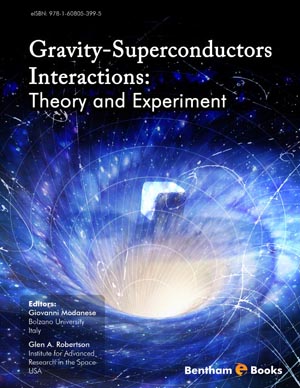Abstract
The technique used by Raymond Chiao for producing a new type of radiation from a superconductor is reviewed. In this technique, superconductors are used both for the source and detector of the radiation, on the hypothesis that the radiation effects are enhanced in superfluid materials. The coherent conversion in superconductors between electromagnetic and gravitational-like radiation requires modifications to standard model theories. The requirements for such modifications are discussed, assuming that they exist. For example, the gravitational-like disturbance needs to be expressed in terms of a vector field disturbance in a macroscopic number of particles, and where the coupling must be typically 20 orders of magnitude stronger than Newtonian gravity. Analogies with particle physics suggest that superconductors also probe vacuum fields comparable to the QCD (quantum chromodynamics) vacuum or higher dimensions.
Keywords: Gravitational forces, theories of gravitation, superconductors, high-Tc superconductors, type-II superconductors, general relativity, vector radiation, scalar radiation, gravitational waves, quadrupole antenna, microwaves, gravitomagnetism, gravity-like fields.













